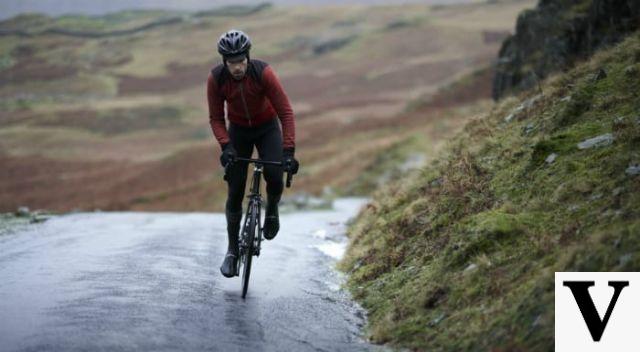Regardless of whether it is an abrasion from asphalt or pain in the knee, an injury risks completely ruining your pedaling, if not completely preventing you from getting on the bike. So, to make sure this doesn't happen often and that you can recover as soon as possible, it pays to have a prevention and recovery strategy ready.
Some injuries will put you out of action for a few days, while others may require the intervention of an expert and the start of a rehabilitation program. In addition, there are individuals who are more prone to injuries to whom, to prevent them, it is enough not to exceed their limit and allow themselves time to recover.
We asked two-time Olympic champion Bryan Steel how he keeps himself in tip-top shape, and we've listed some tips for all asphalt and non-asphalt cyclists on the most common injuries that will help you get back on the bike as soon as possible.

Two-time Olympic champion Bryan Steel says, “Make sure you cool down and relax before finishing your run. Avoid stopping as soon as you are out of breath; Engage a low gear and perform the last 10 minutes of slow pedaling. Upon your return, a recovery meal is the most important thing. Stock up on protein and carbohydrates. Finally, remember to stretch your muscles in order to promote recovery and thus prevent injuries ».
This advice also applies to asphalt cyclists who often rush and lose concentration to get to their destination in time.
Check out this website for support, as well as more tips and training programs that can put you on the right track in achieving your goals.
Knee pain
Does knee pain prevent you from traveling long distances? Make sure, in the dynamic phase, to keep them aligned with your feet to avoid an imbalance in the quadriceps, which is responsible for the problem. Bryan then adds that "stretching is of fundamental importance if you want to avoid injuries." Therefore, always stretch your thighs and buttocks after running, as these muscles can be a symptom of knee pain.
According to a study on the most common injuries in cycling, a further cause of patellar - femoral pain is repetitive flexion - extension of the knee. The patello? Femoral joint would absorb the force generated by the quadriceps in the push phase as a result of various factors, including the size of the bike, functional overload, muscle imbalances, or even simply your anatomical peculiarity.

Asphalt cyclists must always take care of their back to prevent pain and injuries.
According to the same study, chronic pain in the lower back is often caused by prolonged maintenance of the flexed posture.1 In practice, the pain could be due to the height and orientation of the saddle. Avoid this by taking your bike to an expert who knows how to adjust the measurements.
To strengthen and stabilize your back, you should pay particular attention to the strength and flexibility of the lower abdominal muscles and core. 1
Pain in the saddleAsphalt cyclists are well aware that spending hours in the saddle, or even just ten minutes when starting out, can be an annoying experience. If you've just started cycling, don't be surprised by some slight redness as long as it doesn't last for more than two weeks.
However, if the discomfort is chronic, you can consider some of the following remedies. Get a modern, anatomically designed saddle (different for men and women), wear only padded cycling shorts, and be sure to set the saddle in the correct position so that pressure is evenly distributed.

Asphalt abrasions
Asphalt cyclists must always be careful not to fall off the bike. Have you fallen off your bike and slipped on the road? If so, you've probably got yourself an asphalt abrasion. Aside from the awkward hole in your suit, your war wounds might seem pretty insignificant at first. However, abrasions can be really annoying and need to be treated as soon as possible.
To prevent infections, you will need to clean the wound, removing as much dirt and debris as possible. Unfortunately, this involves a little rubbing and a considerable tingling caused by the antibacterial wipes. If the impact has been severe, it is also worth applying ice to reduce swelling. Try, as much as possible, not to cover the wound, so as to allow it to dry out and heal.
Conclusion
Our advice for asphalt cyclists is to calibrate the bike adjustments according to your body measurements, do not overdo it and, finally, stretching and strengthening are the three key concepts with which this article can be summarized. By keeping these three tips in mind, you can be almost certain that you will significantly reduce the risk of injury. If you are in severe pain, consult your doctor or physiotherapist for an expert consultation.
What are the best supplements for cycling? Find out more.


























